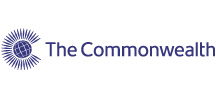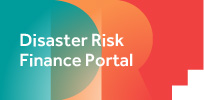Search New
Explore Funding
Filters
Filter your search by checking and unchecking the boxes below.
Before or After the disaster?
Own or Transfer the risk?
Instrument type?
Instruments Available
The ADB Contingent Financing Loan is a loan made available upon a soft trigger (for instance, declaration of state of emergency) with a disbursement-linked repayment schedule.
Longer term for serious medium-term balance of payments problems because of structural weaknesses that require time to address, the IMF can assist with the adjustment process under an Extended Fund Facility (EFF).
The Flexible Credit Line (FCL) was designed to meet the demand for crisis-prevention and crisis-mitigation lending for countries with very strong policy frameworks and track records in economic performance. This instrument was created as part of the process of reforming how the IMF lends money to countries that find themselves in a cash crunch, with the idea of tailoring its lending instruments to the diverse needs and circumstances of member countries. While none of these countries have so far drawn down on these lines, the FCL provides a valuable backstop and helps boost market confidence during the period of heightened risks.
The global financial crisis highlighted the need for effective global financial safety nets to help countries cope with adverse shocks. A key objective of recent lending reforms was to complement the traditional crisis resolution role of the IMF with more effective tools for crisis prevention. The Precautionary and Liquidity Line (PLL) is designed to flexibly meet the liquidity needs of member countries with sound economic fundamentals but with some limited remaining vulnerabilities which preclude them from using the Flexible Credit Line (FCL).
Provide longer-term financing to strengthen economic resilience and sustainability by (i) supporting policy reforms that reduce macro-critical risks associated with climate change and pandemic preparedness, and (ii) augmenting policy space and financial buffers to mitigate the risks arising from such longer-term structural challenges.
The new SBA framework has expanded the range of high access precautionary arrangements (HAPAs), a type of insurance facility against very large potential financing needs. Precautionary arrangements are used when countries do not intend to draw on approved amounts, but retain the option to do so should they need it. In an economic crisis, countries often need financing to help them overcome their balance of payments problems. Since its creation in June 1952, the IMF’s Stand-By Arrangement (SBA) has been used time and again by member countries, and it is the IMF’s workhorse lending instrument for emerging and advanced market countries. The SBA was upgraded in 2009 along with the Fund’s broader toolkit to be more flexible and responsive to member countries’ needs. Conditions were streamlined and simplified, and more funds were made available up front. The new framework also enables broader high-access borrowing on a precautionary basis.
A contingent financing instrument (grant or loan) that provides immediate liquidity following a natural disaster. Funds become available for disbursement after the declaration of a state of emergency due to a natural disaster. Country must have a disaster risk management program in place, which the Bank will monitor on a periodic basis.

